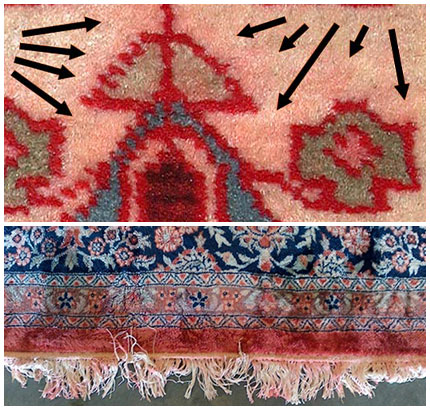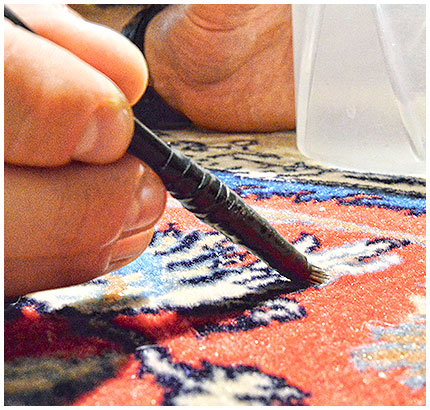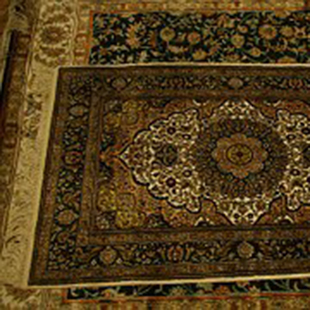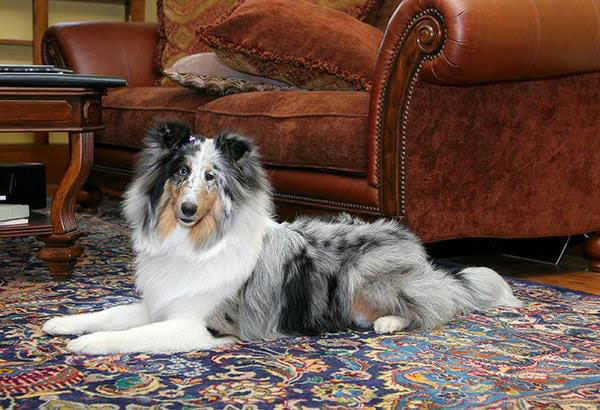Some forms of rug damage are more noticeable than others. It’s easy to see a rip or stain on your favorite rug–less obvious, however, is the bleeding and fading of rug colors that occurs gradually. The reasons a rug can become discolored or stained are numerous: pet urine, wine spills, detergent chemicals, sun-fading, and more. One of the biggest reasons for a rug’s ruination, however, may have occurred before you bought the rug in the first place. With that in mind, we’ll spend most of our time focusing on the issue of rug discoloration caused by colorfastness.
In essence, colorfast is a term used to describe the ability of fabric to resist fading or bleeding (or to use the industry term, dye migration). If you bought a new rug and washed it for the first time, you may notice that the colors lost the vibrancy they once had. Or perhaps you observed the loss of color over time due to repeated washings or natural causes. Thus the problem becomes two-fold: 1) what causes color bleeding in rugs and 2) how does one prevent it?
Why Do Rug Colors Bleed?
There are many reasons why the colors in a rug might not be colorfast. Taking your rug to a professional rug repair service is the best way to determine your rug’s bleeding issues. Here are a few of the potential causes your rug care professional may identify as they specifically relate to the dyeing process:
- Fugitive dyes are colors that bleed or fade after exposure to sunlight. These types of dyes come from nature, making them less permanent and therefore prone to color migration when saturated in the sun’s ultraviolet rays. Other reasons fugitive natural dyes may bleed include improper water exposure or a failed rug washing attempt.
- Excess dye in the fibers of new rugs can cause them to bleed when they’re washed for the first time. To ensure that the excess dye doesn’t wash out into other parts of a rug, a professional rug washer will employ a dye stabilizing solution to prevent color migration.
- Over-dyed rugs pose a similar problem to those with excess dye in that the colors crock (or bleed) when exposed to water. In the case of over-dyed rugs, however, the problem stems from dyes that were added after they were woven. The two rug types that fit this category are tea washed rugs, which are rugs infused with brown dyes to give them that “antique” look, and inked rugs, or rugs that have been painted with India ink in order to conceal areas damaged due to color bleeding.

Red dyes are susceptible to bleeding and fading when exposed to sunlight for extended periods. The minuscule size of red color molecules leaves them more vulnerable to the sun’s effects than most dyes. Persian rugs are particularly vulnerable due to the overwhelming presence of reddish colors.
Blue dyes are prone to fading due to the alkaline chemicals in detergents, along with the general instability of various types of blue dyes. This rule also extends to colors that have blue as a component such as green (which is a mix of blue and yellow) and purple (a mix of blue and red).
Other reasons a rug’s colors may bleed include high temperatures during the cleaning process, the use of high alkalinity detergents and acidic stains caused specifically by pet urine. Unlike the causes mentioned above, these color-bleeding reasons are the result of owner error. To avoid or amend these mistakes, the best course of action is to have the rug professionally washed.
How Do I Keep My Rug Colors from Bleeding?
There are steps you can take to prevent the colors in your rug from bleeding or fading:
- Perform a dye test on your rug by immersing it in a tub of hot water or by using a high pH solution. It’s important to test both the front and the back of the rug, as well as both the surface and interior rug fibers.
- Use a dye stabilizer or dye lock solution to colorfast your rug and keep its vibrant hues. This step should be performed if your initial hot water test resulted in color migration; it’s another method of determining whether colors run, which may be an indicator of faulty dyes.
- Keep your rug away from excessive light by keeping the curtains/blinds drawn during particularly sunny days. This way, the intense UV rays won’t “bake” the red dyes in your rug.
- Re-dyeing restores color to fabrics such as nylon and wool. A certified dye master has the training to precisely blend colors so that the rug is restored to its original condition. (cf. with rug painting?)

While these steps can help, the best thing you can do for your rug is to take it to an expert in rug color restoration. A certified dye master can reverse whatever damage has been done so that your rug appears good as new. Taking your rug in for color restoration is important for a few reasons. For one, a rug’s aesthetic and financial value is enhanced, not diminished, by color restoration. For another, having colors professionally restored ensures that the rug isn’t further damaged or “over-restored,” meaning that the colors are made too vibrant relative to the original.



